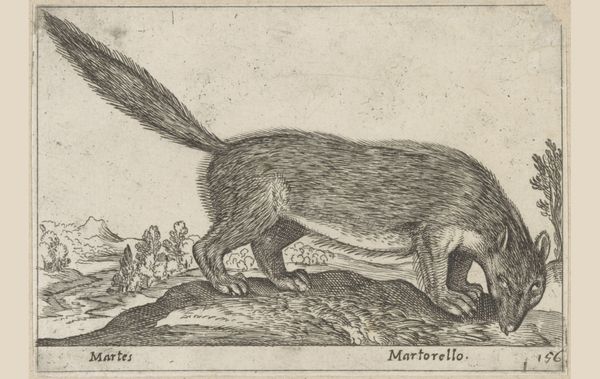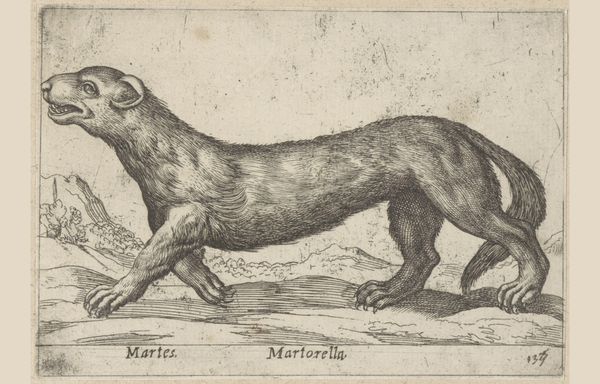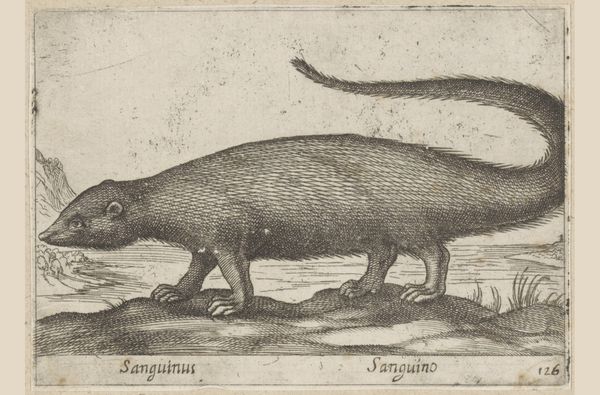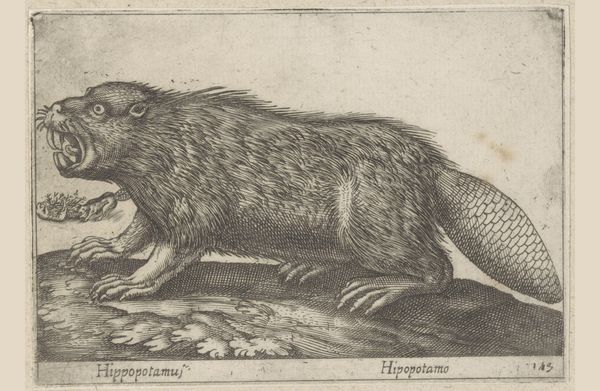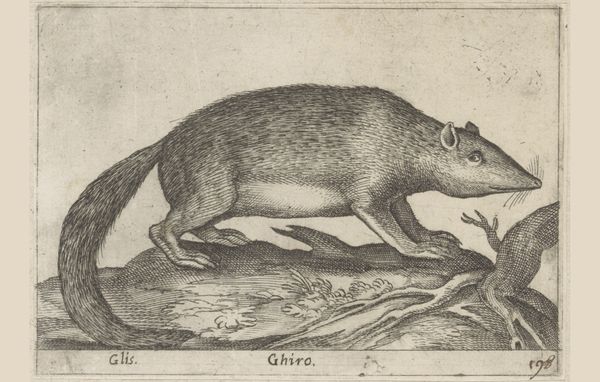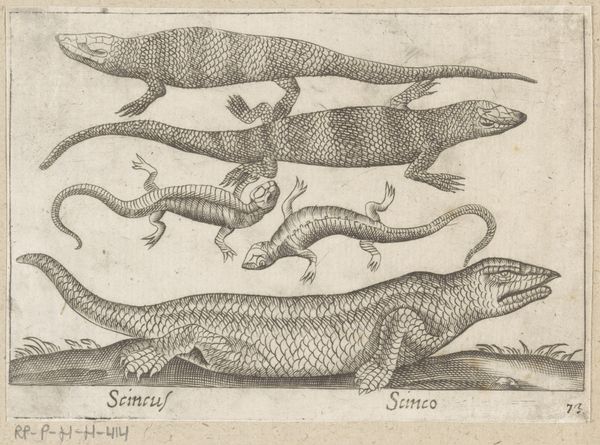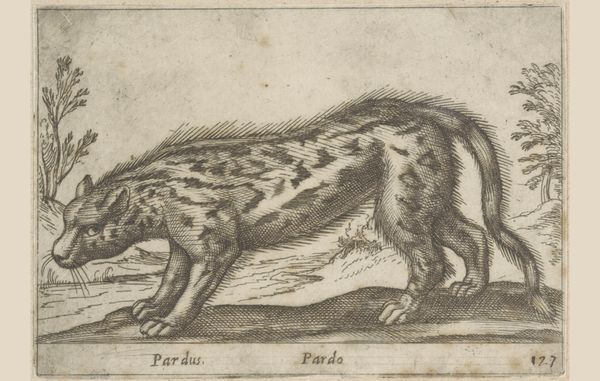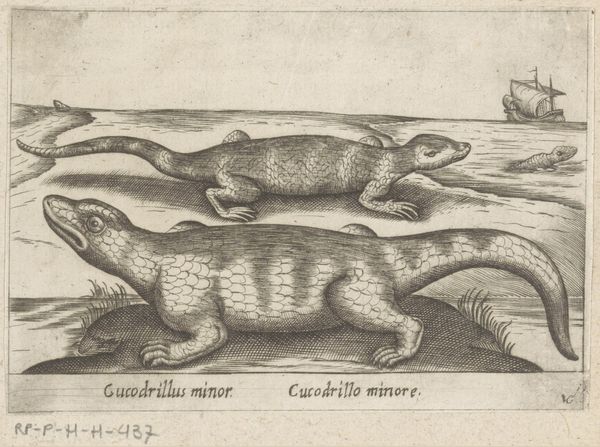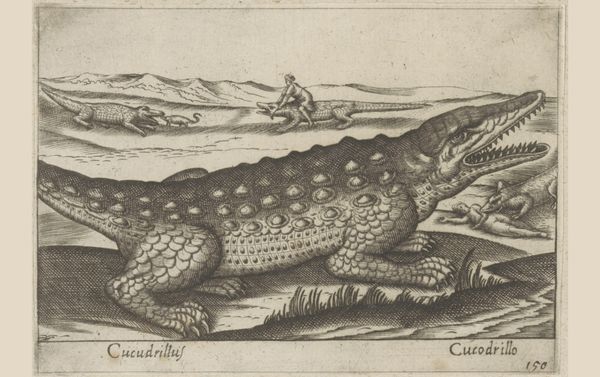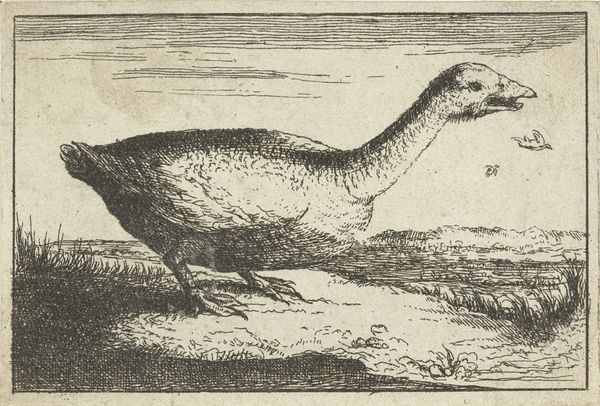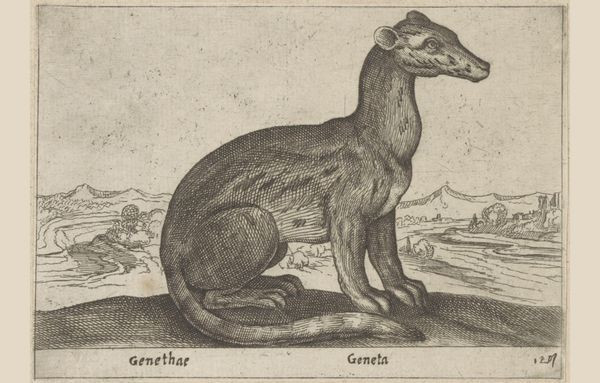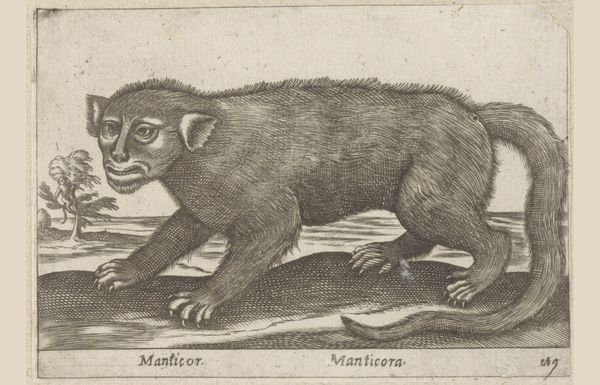
print, etching, engraving
#
animal
# print
#
etching
#
old engraving style
#
figuration
#
line
#
engraving
#
realism
Dimensions: height 95 mm, width 137 mm
Copyright: Rijks Museum: Open Domain
Antonio Tempesta created this engraving of a weasel some time between 1576 and 1630. During the late 16th and early 17th centuries, a growing interest in the natural world fostered scientific studies of animals. Yet, the representation of animals also served symbolic functions, reflecting specific social and cultural values. The weasel, depicted here with sharp lines, embodies both admiration and disdain. Admired for its agility and hunting skills, it was also associated with cunning and thievery. Weasels often appeared in fables and emblems, embodying traits that served as moral lessons. Consider how the representation of this small creature might reflect human anxieties and aspirations of the time. Does it evoke a sense of respect, fear, or perhaps a bit of both? This artwork encourages us to think about how societal attitudes shape our perception of the natural world. It prompts reflection on the shifting meanings we attach to animals.
Comments
No comments
Be the first to comment and join the conversation on the ultimate creative platform.
